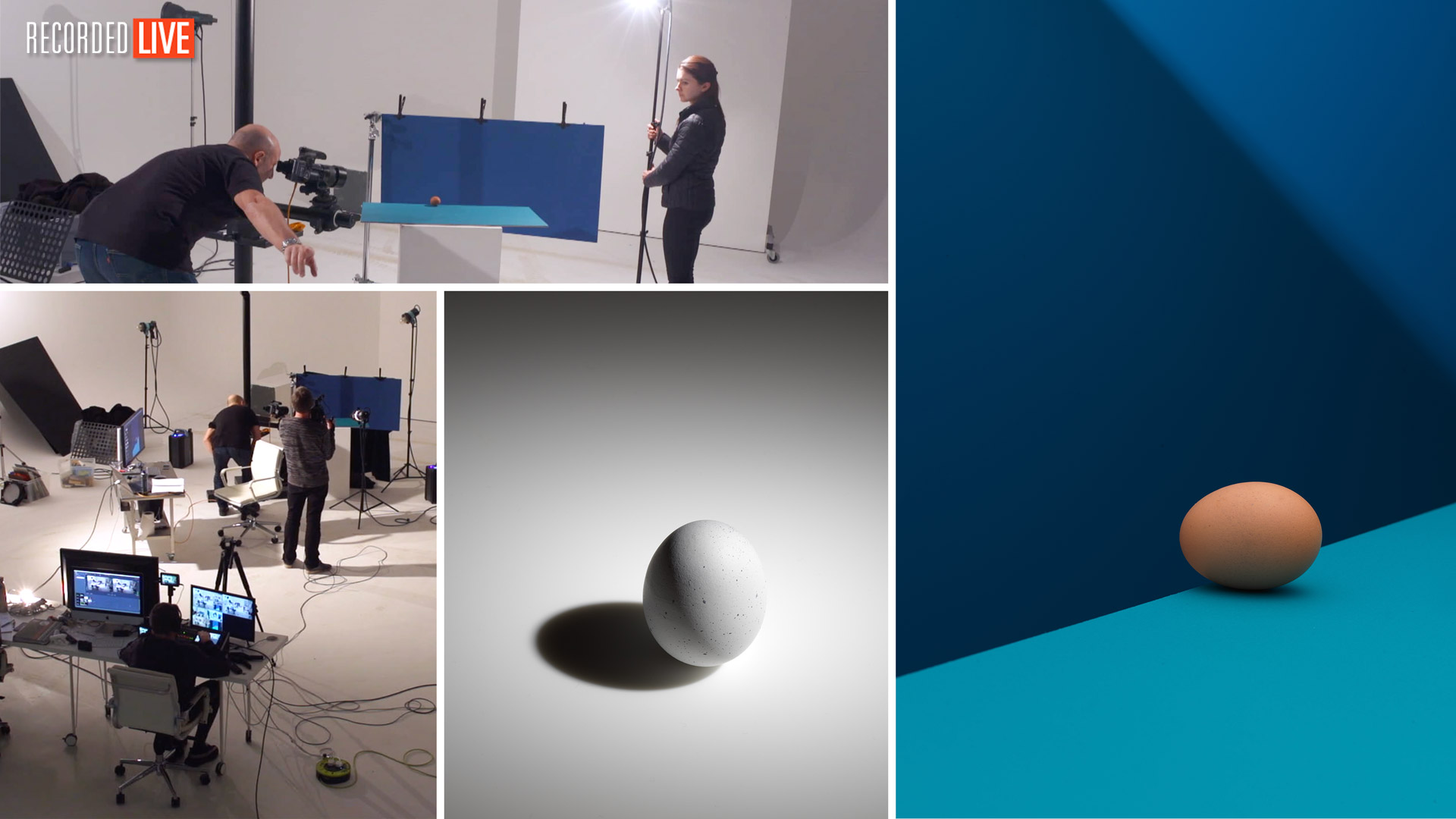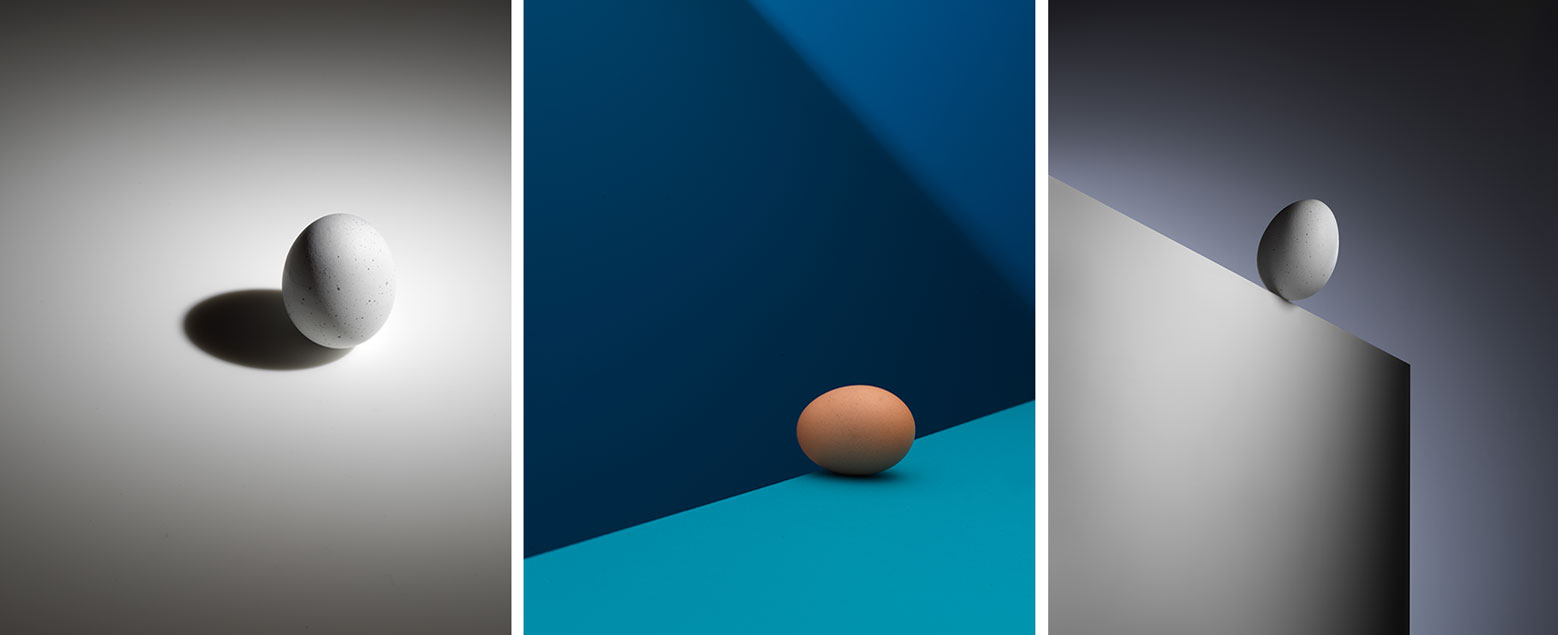Lighting Control (The Egg Challenge)
We set Karl a challenge – to shoot an inanimate subject (namely an egg) in a single location with minimal different surfaces and backgrounds, and zero props. How did he do?
In this live show, drawing on his knowledge of light and lighting control, Karl covers a number of techniques for controlling the mood and feel of an image, including:
- Light position
- Light direction
- Light hardness and softness
- Light colour
- Choice of modifier
- Invoking emotion
- Composition
- Sculpting the subject
Karl demonstrates how, by thinking outside the box and using light creatively, it’s possible to achieve great results – even when photographing simple subjects. Combining theory and practice, he reveals how the essentials of studio lighting can be applied for exciting results.
Using standard, affordable modifiers, as well as a few pro light shapers, Karl demonstrates important theoretical concepts relating to light and colour that can be used to better control studio lighting. These include how the size of the light impacts the hardness or softness of the light; how to mix hard and soft light and how to create completely shadowless light; and how to easily create an affordable DIY alternative for projection attachments.
He then creates two different still-life setups. The first demonstrates the importance of colour, while the second highlights how you can use narrative, emotion and anticipation to create alluring still-life imagery.
In this class:
- Creative ideas for still life photography
- Lighting theory and how to control studio lighting
- Colour theory and triadic colour schemes
- Creative one-light setups
- How to mix hard and soft light
- How to create shadowless light
- How to use narrative, emotion and anticipation for creative conceptual imagery
If you have any questions about this class, please post in the comments section below.



Comments
That was amazing! Very beautiful and useful information. I’ll watch that one again. Is there a particular color checker card you recommend? Thank you.
Hi Linnie, thank you. Yes I’d recommend an X-Rite Color Checker Passport as it’s compact and protected.
Thanks, Karl!
And it looks like the x-rite has been rebranded to Calibrite-at least in the US.
https://www.xrite.com/categories/calibration-profiling/colorchecker-classic-family/colorchecker-passport-photo-2
AWESOME! ❤ BEAUTIFUL! ❤ Thank YOU very much 😁
One question about the colour balance card.. specifically in a situation such as this, where you have a predominance of one colour, such as this blue and bounce light. If measuring the gray, I would imagine it may give you a false reading suggesting that the scene is too blue, and balancing the image will if fact shift the colours incorrectly. Do you find this is for images that are predominantly in one hue?
Hi Gary, if you want to avoid compensating for any bounced wall colours then you need to bring the checker card forwards out of the set slightly and towards camera but still with the key light exposing it. Generally speaking though I’d say it was better to keep it in set as it is the Egg that we want to ensure is correct, other colours like the walls can easily be enhanced/saturated or shifted slightly in post.
I really love the graphic flat look you demonstrate with the global light. Great learning. And then switching over to the scrim to counter that by converting to gradients. I had run into the issue with the donut flash tube not producing defined shadows when I was using a cucoloris (of a window frame) and had to arrive at an acceptable solution. Loads of interesting tidbits in this live tutorial.
Karl, you are not the first person to make an egg stand upright. Check out Brunelleschi, the egg and the Cathedral in Florence. Peter
http://yourcontactinflorence.com/brunelleschi-and-the-egg/
Really2 nice, can i replicate this idea and put it in portfolio or my social media mr.taylor?
Hi, we encourage our students to practise the techniques and shoots shown but we’d also encourage you to interpret them in new versions with your own ideas. If you are unable to do that and you place an image on your website that is based on one of ours then it should have a text overlay in the corner stating that the image concept and idea are from Karl Taylor Photography.
Mr. Taylor is not only a professional photographer – he is an artist!
Hi Karl, great video. One question, basically all my lights are profoto B1 and D2, which don t have the bare bulb. But if not using any light shape can I get the same result as if the bare bulb when bouncing the all around fill light? Thanks
Hi Carmo, I’m afraid the law of physics says no. You knew the answer to this yourself because you asked the question and it of course doesn’t seem logically possible that light can come out of something sideways when it has no where to exit. So what do you do? Well you add some sort of dome to the front that your light will hit and then spread out in all directions.
Excited to be part of Karl Taylor Education. I just got the membership. Time to get out of comfort zone.
Great stuff and welcome aboard.
Another fantastic tutorial! I learned so much and can’t wait to put some of the tips into practice on my next shoot.
Thank you Oksana. I hope you enjoyed the website critique and I wasn’t too hard on yours. I just felt that it focused on selling a particular service very well but that it might be slightly overwhelming at first as there were several messages to take in simultaneously. I think if you can address the balance of those messages then it will be more effective.
You weren’t too harsh at all! I really appreciate and value your input. It’s not often one gets honest & constructive criticism from a professional like you. I totally see your point, after your review I realized how overwhelming and confusing it may seem to a visitor and as I learned in sales “A confused mind says no” 🙂
I have been playing around on Squarespace platform to see if I can get the video smaller but its imbedded from vimeo, I’m sure I will find another way. And repetitive things on the bottom are actually a footer for the website that appear on every page. I am slowly making changes while keeping your suggestions in mind.
Thank you very much!
Oksana
Hi, Oksana I have video on my squarespace site https://karltaylor.com/film-video and I needed to use a private coder to write some code to do this.
Hi Oksana, I have video on my squarespace site https://karltaylor.com/film-video and I got a developer to write some custom code to fix the problem. It’s not an expensive fix.
Hi Karl
At 16:00 , when you used a scrim / barebulb to get a softer shadow, what would have happened if you brought the scrim even closer to the egg and the bare bulb just inches from the scrim? I would assume the “ball of light” would have become smaller and would’nt then this behave as a pinpoint source and cast a harder shadow?
If this is true then scrim/barebulb behaves in opposite manner to a soft box, because the later will cast a softer shadow as you bring it closer to a subject.
Amit
Hi Amit the further the scrim is in front of the light source will always make the original lightsource appear bigger and therefore softer whether it’s a sof-tbox or a bare-bulb you are still increasing the size of the light. The closer the scrim is to the light then the light size will reduce and become harder and the gradient fall of will change too. Please watch this one https://visualeducation.com/class/introduction-and-understanding-light/
Great tutorial! Ashley is working real hard in these live shows 🙂
She’s a great assistant but don’t tell her I said so 😊
Your secret is safe with me. no one will know 🙂
She occasionally reads these comments so I think we’ve blown it 🤣
I knew it! I knew it 🙂
Karl, In these days of going crazy, If you are able to have more live shows, Photos sent to you and critique them, just to keep our sanity with Photography, Would be much appreciate it. You don’t even need to have guests flying to you.
Hi !
I can’t see tutorial…
What to do ?
Great live, thank you!
Hi Karl,
Great tutorial! Inspiring as always.
What kind of 3 way head do you use? It looks very solid and precisely adjustable. Manfrotto I guess, but which one?
Hi thank you and yes it’s a Manfrotto 410 geared head.
Thank you for you reaction.
Ordered one right away and using it for al couple of days now. Really awesome and super precisely.